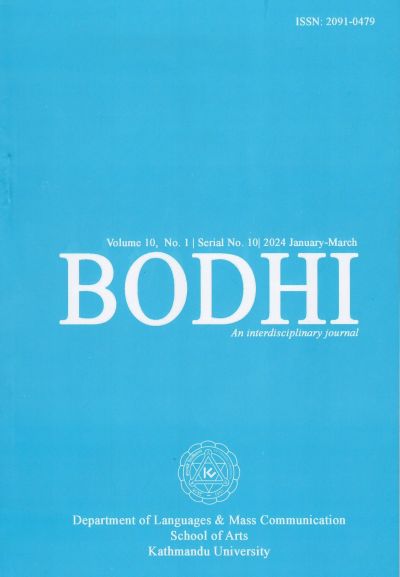Non-Verbal Communication in Indian Classical Dance Forms
DOI:
https://doi.org/10.3126/bodhi.v10i1.66929Keywords:
Non-verbal communication, classical Indian dance forms, psychology, anthropology, cross-cultural communication, dance studiesAbstract
This study delves into the intricate world of non-verbal communication within the rich mosaics of the Indian classical dance forms. The statement quoted by Noam Chomsky, “Language is not an inborn quality, it is creative and acquired”. The objective of this research is to analyse and focus on the need for humans to communicate, that too using non-verbal communication. Dance will not be relegated to simply a performance genre but will be treated as an essential ingredient of life. The focus would be on identifying the non-verbal elements of the dance that would communicate not just the stories but also social messages if needed through the gestures and other elements in Indian Classical Dance Forms. For this analysis, the researcher has considered, Bharatanatyam, Kuchipudi, Mohiniyattam, and Kathakali, the dance forms that trace their origin to the southern states of India namely, Tamil Nadu, Andhra Pradesh, and Kerala. The research employs a multidisciplinary approach, combining elements of anthropology and performing arts to unravel the communicative nuances in the intricate hand gestures, facial expressions, body postures, and rhythmic footwork inherent in Indian classical dances. By examining the symbolism and cultural significance of gestures (mudras), the utilization of facial expressions (abhinaya), and the synchronization of movements with musical rhythms, the research seeks to unveil the deeper layers of communication that lie beneath the surface of these mesmerizing performances.
Downloads
Downloads
Published
How to Cite
Issue
Section
License
© Department of Languages and Mass Communication, School of Arts, Kathmandu University, Nepal




